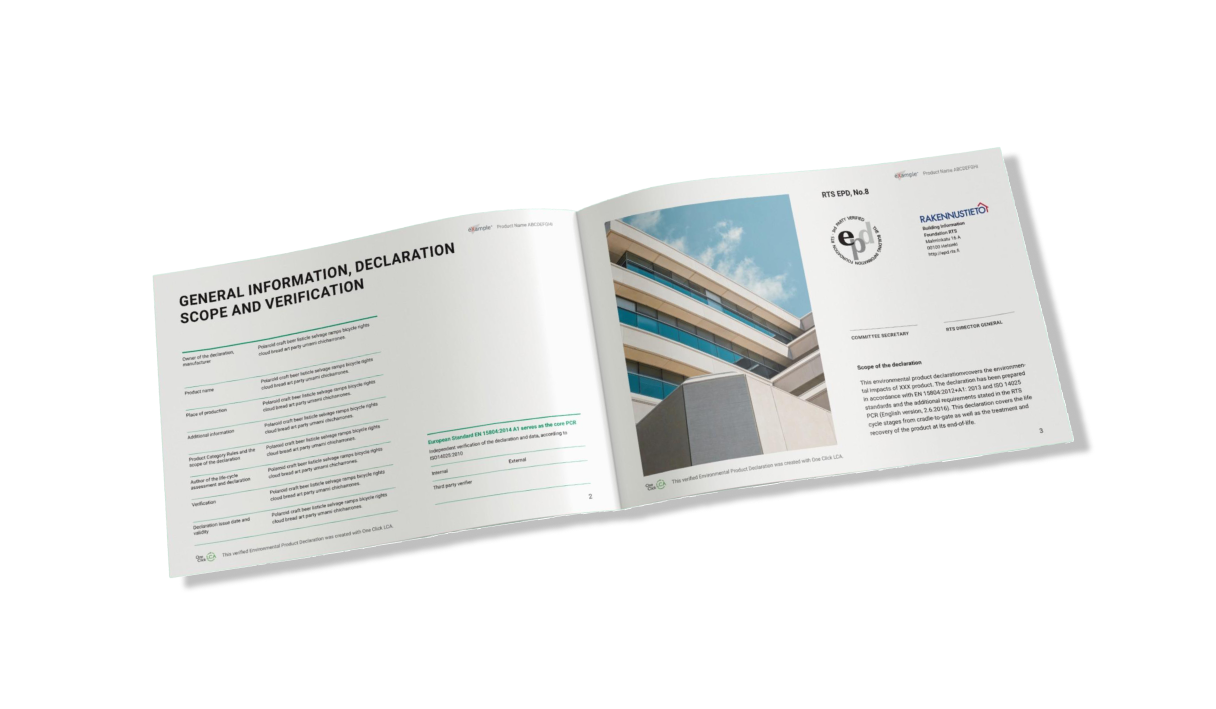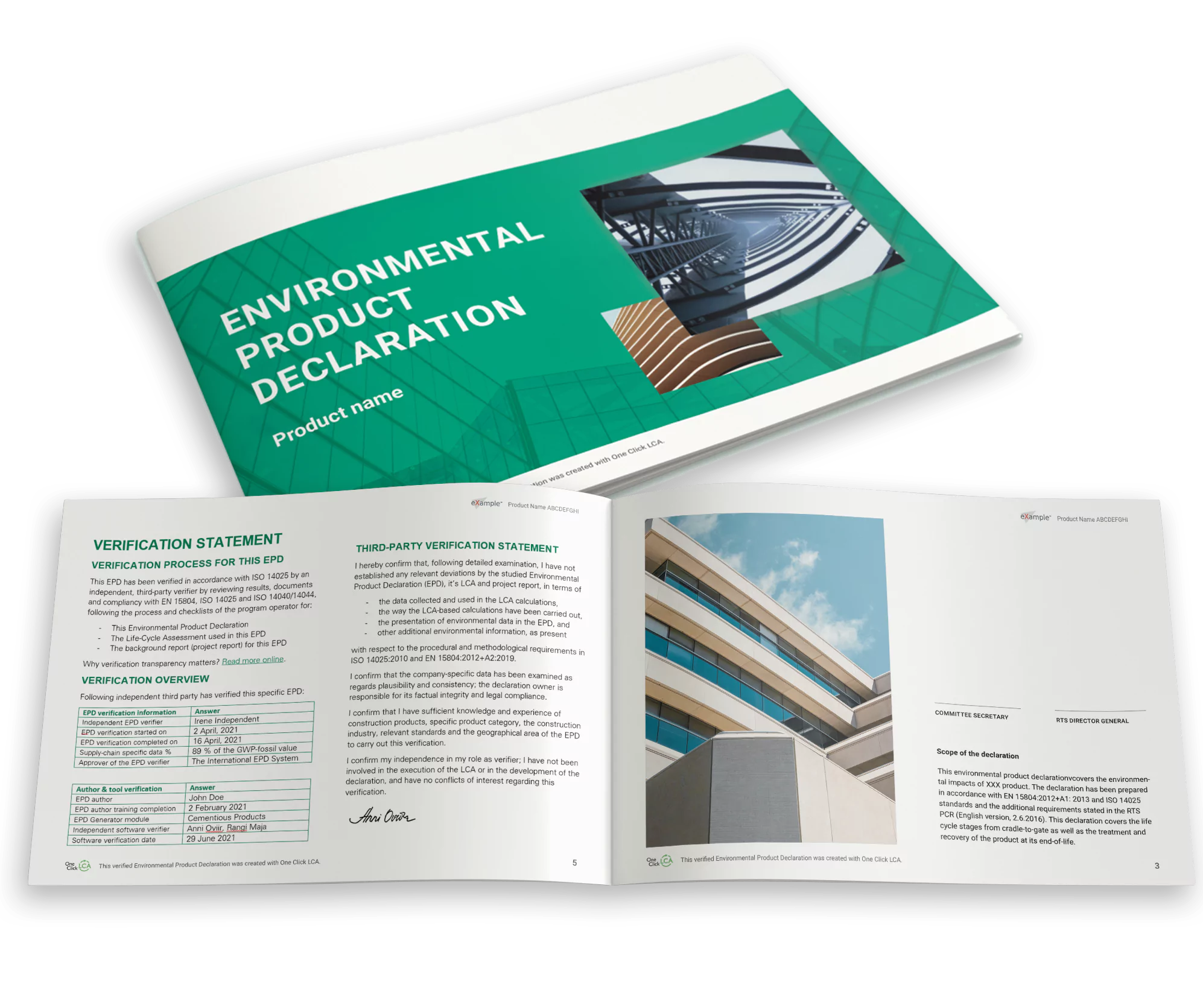
A comparative review for construction product manufacturers
As a manufacturer, it is crucial to showcase the environmental impact of your products. But the question remains, should you opt for a Product Environmental Footprint (PEF) or an Environmental Product Declaration (EPD)? Our comparative review of the methodologies underpinning each system found that EPDs have the edge over PEFs for construction products, due to their fitness for purpose, scalability and environmental benefits.

For construction products, EPDs have the edge over PEFs due to their fitness for purpose, scalability and environmental benefits
Overview & practical application
The Product Environmental Footprint (PEF) methodology has been developed by the European Commission as a tool for advancing various product sustainability initiatives of the European Commission. The PEF methodology refers to these standards: ISO 14040, ISO 14025, ISO 14067, and ISO 14020. The general purpose of PEF is to support European policy as a potential methodology for regulations. Its specified intended applications are to support in-house product sustainability analyses as well as B2B and B2C communication. There is currently no commercial application for PEF.
The EPD methodology has been developed by the CEN/TC 350 Sustainability of Construction works, which is a standardization group consisting of industry experts and other stakeholders (LCA consultants. government experts, NGOs, etc) developing standards for the EU and global market. The EPD standard applies the ISO 14040 and 14025 and other standards. The general purpose of the EPD standard is to support B2B communication and regulations. The EPD data is also used for purpose of project-level life-cycle assessment of construction works under the related EN 15978 and other standards. As of today, thousands of companies publish EPDs under the EPD standard, also including in non-European countries, including as far as Australia and New Zealand.
The choice of the methodology used for product environmental impact assessment in the context of future regulations or standards matters enormously. In the view of the authors, the applied methodology has to be robust, consistent, fit for purpose, scalable, efficient, and lead to environmental benefits.
Robustness & consistency
Both PEF and EPD methodologies can be considered robust for the task. In the EPD methodology, the program operators are responsible for ensuring the quality of the verifiers and the published EPDs. PEF approaches quality with scoring requirements.
In terms of consistency, the EPD methodology is more consistent. It does not allow consequential impact assessments for the use stage of products, unlike PEF. The EPD methodology includes consequential impacts into module D, and impacts outside the system boundary. However, as any PCR for PEF would be expected to mitigate the potential impact this has, the impact is quite limited.
Fit for purpose
Only the EPD methodology can be considered fit for construction products or, indeed, for any products permanently installed into buildings, including building systems, furniture, or finishings. The PEF methodology considers the product itself as a function, whereas in construction, the function is achieved at the level of the construction work itself. PEF imposes significant additional burdens on any manufacturer to define a set of functional parameters for each of their products.
Scalability & environmental benefits
Similarly, only the EPD methodology can be considered scalable. The EPD methodology has proven itself for thousands of manufacturers and has dozens of program operators publishing data, as well as several dozens of standardized PCRs. The PEF methodology’s requirements generate significant additional analysis and reporting burdens, thus increasing the costs of the assessments.
Use of either methodology does in themselves lead to environmental benefits. The environmental benefits can be realized through the scalability of the methodology and availability of data, which allows buyers to start setting requirements for their products and specifiers to start to make choices.
Summary
The conclusion of this comparison and the view of the authors is that the EPD methodology is more suitable for construction products and any products permanently installed into buildings than the PEF methodology due to its clearly superior fitness for purpose, scalability, and environmental benefits, and similar level of robustness and consistency.
Get help with environmental impact assessments
If you are looking for ways to support a range of environmental impact assessment needs, including EPDs, please reach out to get a demo of how One Click LCA can help you with your global environmental impacts assessment requirements in a reliable, highly automated, and scalable manner.
Download
To learn more about the difference between EPD and PEF methodologies, read our briefing note:
EPD and PEF Methodologies: A Comparative Review.

